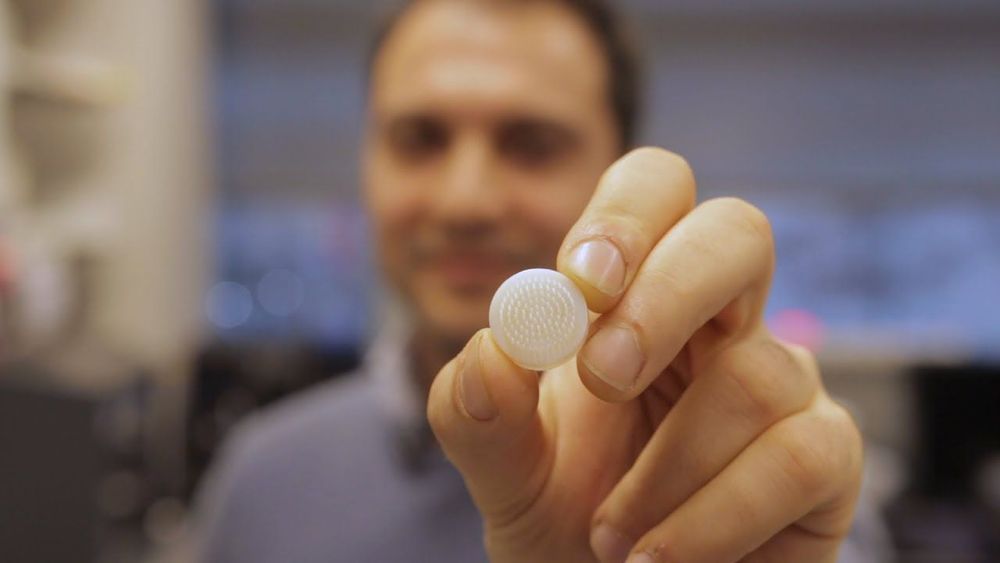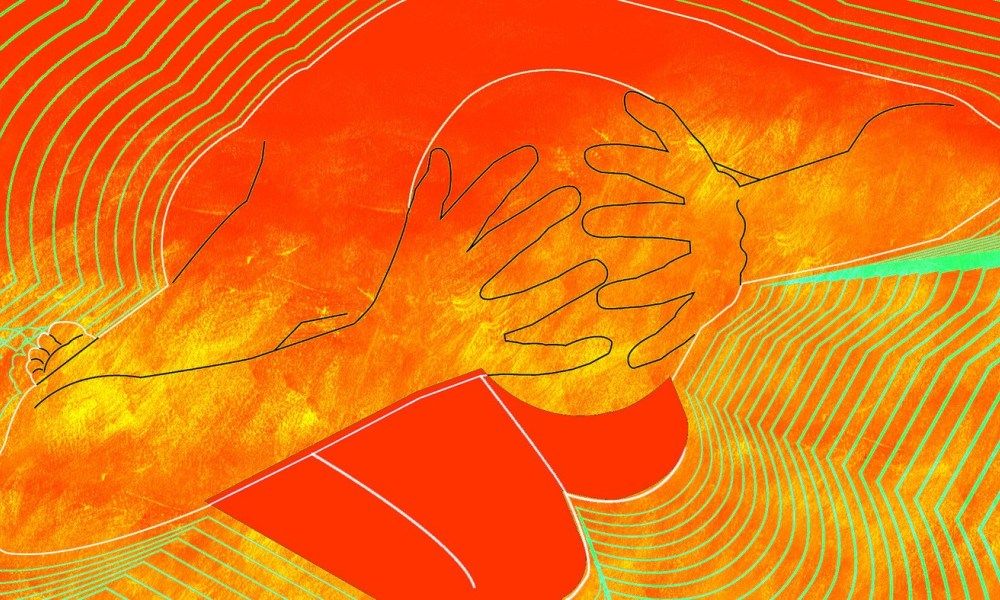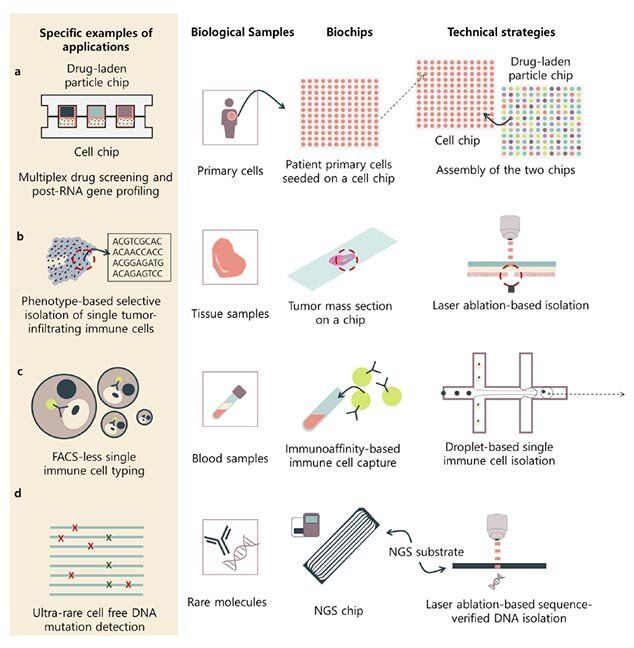Kalashnikov — famous for making the AK-47 — reveals machine monster which looks straight out of Avatar or Robocop as a ‘demonstration of what is to come’ at Moscow’s Army 2018 Fair.
Two recent studies highlight novel ways to combat pattern hair loss in men and women using small molecules such as JAK inhibitors that reawaken dormant hair follicles, as well as stem cell therapies aimed at growing new follicles.
In the first study, researchers led by Angela Christiano, Ph.D., the Richard & Mildred Rhodebeck Professor of Dermatology at Columbia University Vagelos College of Physicians and Surgeons, discovered previously unknown cells that keep mouse hair follicles in a resting state and show that inhibiting the activity of these cells can reawaken dormant follicles.
In a second study, Christiano’s team created a way to grow human hair in a dish, which could open up hair restoration surgery to more people, including women, and improve the way pharmaceutical companies search for new hair-growth drugs.
Around the ruins and dense rainforest of a mysterious “lost city” in Honduras, researchers have discovered a treasure trove of biodiversity, including numerous species once thought to be extinct and others previously unknown to science.
As detailed in a new report, a recent expedition by Conservation International’s Rapid Assessment Program (RAP) and the Government of Honduras headed deep into a previously unexplored corner of the forest around Ciudad Blanca, in La Mosquitia, Honduras.
Their biological assessment documented 246 species of butterflies and moths, 30 bats, 57 amphibians and reptiles, as well as numerous fish, mammals, and insects. At least 22 of these species had never been recorded in Honduras before.
STORY SUMMARY
HONOLULU, Hawaiʻi — The Pacific Tsunami Warning Center reports that a strong earthquake has occurred just after 5 p.m. HST in the vicinity of Indonesia, but did not generate a tsunami threat to Hawaiʻi.
The Planetary Society’s second solar sail will attempt to use sunlight to fly through space.
Individuals that are experiencing frequent migraines, may soon receive access to a new class of medications.
A pair of large studies showed that two drugs have the ability to reduce the frequency of the migraine attacks, without any side effects. The researchers report in the New England Journal of Medicine that the drugs offer the first ever migraine treatment that is aimed at the disorder itself, instead of the symptoms.
Current migraine treatments consist of drugs that are designed to treat epilepsy, depression and high blood pressure. Peter Goadsby, an author of one of the studies in question and a professor at King’s College in London says that they give the patients a choice between antidepressants that will make them sleepy, and a beta blocker, which will make them feel tired.
Organic solid-state lasers are essential for photonic applications, but current-driven lasers are a great challenge to develop in applied physics and materials science. While it is possible to create charge transfer complexes (i.electron-donor-acceptor complexes among two/more molecules or across a large molecule) with p-/n- type organic semiconductors in electrically pumped lasers, the existing difficulties arise from nonradiative loss due to the delocalized states of charge transfer (CT). In a recent report, Kang Wang and a team of researchers in the departments of chemistry, molecular nanostructure and nanotechnology in China demonstrated the enduring action of CT complexes by exciton funneling in p-type organic microcrystals with n-type doping.
They surrounded locally formed CT complexes containing narrow bandgaps with hosts of high levels of energy to behave as artificial light-harvesting systems. They captured the resulting excitation light energy using hosts to deliver to the CT complexes for their function as exciton funnels in order to benefit lasing actions. Wang et al. expect the preliminary results to offer in depth understanding of exciton funneling in light-harvesting systems to develop high-performance organic lasing devices. The new results are now available on Science Advances.
Organic semiconductor lasers that function across the full visible spectrum are of increasing interest due to their practical applications from multiband communication to full-color laser displays. Although they are challenging to attain, electrically pumped organic lasers can advance the existing laser technology to rival organic light-emitting diodes.
Until the day he died, in 2011, Robert Ettinger hoped humanity would figure out a way to cheat death. Today, his body is stored in a chamber filled with liquid nitrogen and frozen to −196 °C. He lies in cryopreservation at the Cryonics Institute in Michigan—which he founded—alongside his late mother, his first and second wives, and 150 other deceased.
Ettinger, known as the “father of cryonics,” popularized the idea in his 1962 book The Prospect of Immortality. (Isaac Asimov, the renowned biochemist and science-fiction writer, helped Ettinger publish the book.) Cryonicists believe that technology will sufficiently advance to a point where cells can be rejuvenated and the aging process reversed. In practice, legally deceased patients arrive at a cryonics facility packed in ice. Cryonicists interrupt the dying process by draining the blood from the body and perfusing the corpse with a mixture of anti-freeze and organ-preserving chemicals, known as cryoprotective agents. The body is then transformed into a vitrified state and lowered into a below-freezing chamber filled with liquid nitrogen, where it lies in wait for a future generation to restore it.
“We Will Live Again” was directed by Myles Kane and Josh Koury (http://www.brooklynundergroundfilms.com). It is part of The Atlantic Selects, an online showcase of short documentaries from independent creators, curated by The Atlantic.
Biochips are essentially tiny laboratories designed to function inside living organisms, and they are driving next-generation DNA sequencing technologies. This powerful combination is capable of solving unique and important biological problems, such as single-cell, rare-cell or rare-molecule analysis, which next-generation sequencing can’t do on its own.
Now that the scaling and throughput power of biochip technologies has emerged, the next trend in biochips will involve being capable of providing applications across a wide spectrum—from identifying rare bacterium to population-based clinical studies.
In APL Bioengineering a group of researchers from Seoul National University explore the role advancements in biochip technology are playing in driving groundbreaking scientific discoveries and breakthroughs in medicine via next-generation sequencing, aka high-throughput sequencing.








